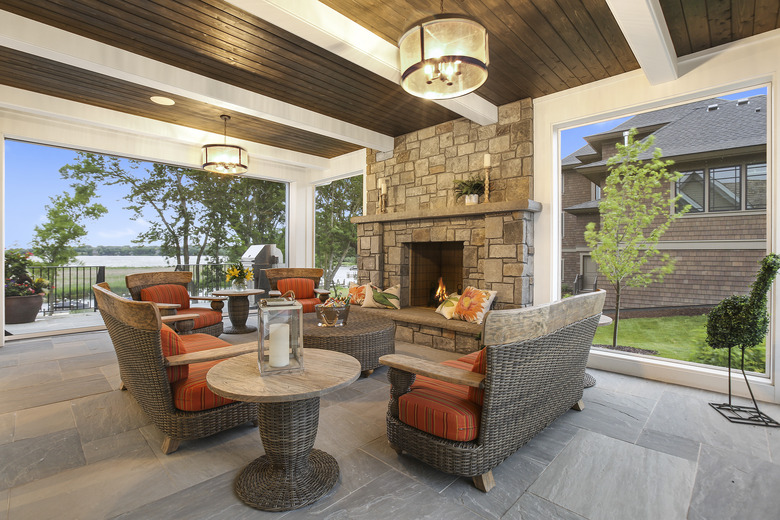What Happens When You Burn Wet Wood In A Fireplace?
We may receive a commission on purchases made from links.
Maybe a sudden rainstorm soaked your wood pile or you've picked up freshly cut firewood from a roadside stand. If you don't have seasoned (dry) wood available on a cold night, you may be tempted to make a fire using wet firewood. Warm up with blankets instead because no matter what type of fireplace you have, dry wood is best. The negatives of burning wet wood indoors outweigh the benefits of any feeble heat you might be able to coax from it.
Tip
If you try to burn wet wood in your fireplace, it probably won't generate much heat (if the wood combusts at all), and it may in fact be harmful for your health or create a fire hazard in your chimney.
Burning Wet Firewood vs. Dry Firewood
Burning Wet Firewood vs. Dry Firewood
There are three primary reasons burning wet firewood in a fireplace isn't ideal. The first is burnability. Not all pieces of wet firewood are equal; it matters whether the wood is only damp on the outside from a rainstorm or whether it's wet all the way through. Generally speaking, wet wood won't burn efficiently or at all, so you probably won't generate much heat this way.
Smoke is the second reason not to burn wet wood indoors. If you've ever seen wet wood burn on a bonfire, you've seen how much smoke this produces. You don't want that smoke billowing into your living room. If your smoke alarms are functioning properly, they'll likely be triggered, and you don't want anyone in your home breathing in this potentially harmful smoke.
The third reason not to burn wet wood indoors is creosote. This chemical compound is a byproduct of combusting wood and creates a layer of what looks like tar inside your chimney. Creosote buildup is a primary cause of chimney fires. Burning wet wood can generate significantly more creosote than burning dry wood, increasing your home's fire risk.
What's the bottom line? Whatever type of firewood you use in the fireplace, use wood that has a moisture content of no more than 25 percent. Burning wood that's 10 to 20 percent moisture is ideal.
Assessing Moisture in Firewood
Assessing Moisture in Firewood
So, you know that burning wet firewood isn't a good idea, but how are you supposed to know whether a piece of cut wood is dry enough to burn in your fireplace?
You may be able to tell using visual clues. Seasoned wood generally looks weathered, has cracks in the cut ends and (of course) feels dry to the touch. If you tap a piece of dry wood with another piece, you should hear a hollow thunk. The easiest way to determine whether your firewood is dry enough for a fireplace is to use a digital moisture meter. Place the prongs of the meter into the wood and get an immediate reading of the moisture content.
Drying Wet Wood
Drying Wet Wood
Experts suggest buying unseasoned firewood at least a year before you plan to use it because it takes months for green wood to dry out. There are a few things you can do to help dry firewood quickly. Removing the bark and letting the wood be exposed to sun and dry air will help it dry faster than if the wood were tightly stacked and kept in a damp basement or garage. Don't expect miracles. Wood that's too wet to burn today probably won't be dry enough to burn tomorrow.
As firewood dries, be diligent about protecting it from the elements. A single storm could soak your wood and set back the drying process by months. Stack firewood on a sturdy firewood rack that sits off the ground and keep the rack covered with a vented waterproof cover if you store your firewood outdoors.
